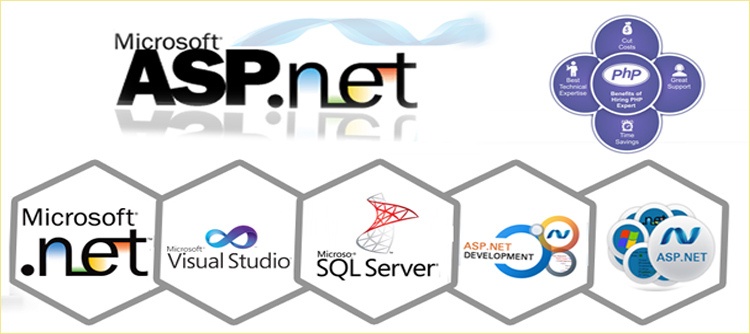What is ASP Programming? A Comprehensive Guide to ASP and ASP.NET
Web development has evolved significantly over the past few decades, and Microsoft’s ASP and ASP.NET have played a central role in that transformation. While these two technologies are often mentioned together, they represent different generations of server-side web programming. This article aims to provide a comprehensive and up-to-date overview of ASP (Active Server Pages) and ASP.NET, explaining their differences, capabilities, programming models, and advantages.
What is ASP (Active Server Pages)?
ASP, or Active Server Pages, is Microsoft’s first server-side scripting technology introduced in 1996. It allowed developers to create dynamic and interactive web pages by embedding scripts within HTML. Unlike traditional HTML pages, which are static, ASP pages are processed on the server, allowing for real-time interaction with databases, user inputs, and more.
How ASP Works
ASP files have a .asp extension and can include a mix of HTML and scripting code. The scripting is enclosed in special tags: <% ... %> And executed on the server before the HTML is sent to the client. For instance:
<%
Response.Write("Welcome to ASP!")
%>Popular scripting languages used in classic ASP include VBScript and JScript (Microsoft’s version of JavaScript). While ASP allowed some flexibility in working with other scripting engines like PerlScript or Python via COM, VBScript was the most widely used.
Typical Use Cases of ASP
Displaying user-specific content (e.g., greeting users by name)
Retrieving and displaying database records (e.g., product listings)
Form submissions and validations
Uploading files, such as images
While ASP was revolutionary in its time, it eventually became outdated due to limitations in scalability and maintainability and a lack of true object-oriented capabilities.
What is ASP.NET?
In 2002, Microsoft launched ASP.NET as a modern, robust, and scalable successor to classic ASP. Built on the .NET framework, ASP.NET enables developers to create dynamic websites, web applications, and web services using full-fledged programming languages such as C# or VB.NET.
Unlike ASP, which is interpreted at runtime, ASP.NET code is compiled. This means the code is transformed into machine-readable form before execution, which results in better performance, faster execution, and fewer runtime errors.
Key Differences Between ASP and ASP.NET
| Feature | ASP | ASP.NET |
|---|---|---|
| Release Year | 1996 | 2002 |
| Language Support | VBScript, JScript | C#, VB.NET, F#, and others |
| Code Execution | Interpreted | Compiled |
| Object-Oriented | No | Yes |
| Performance | Moderate | High |
| Scalability | Limited | Excellent |
| File Extensions | .asp | .aspx, .cs, .vb |
| Architecture | Script-based | Framework-based (.NET) |
ASP.NET Programming Models
ASP.NET offers several programming models designed for different needs and project sizes. Let’s explore the main ones:
1. ASP.NET Web Forms
This was the original ASP.NET programming model. It provides a drag-and-drop approach to building web applications and mimics the structure of Windows Forms applications.
Key Features:
Event-driven programming model
Rich server-side controls (buttons, grids, dropdowns, etc.)
ViewState to maintain state across postbacks
Easy learning curve for Windows developers
Each Web Form consists of:
An .aspx file for UI elements (HTML + ASP controls)
A code-behind file (.aspx.cs or .aspx.vb) for logic and event handling
While Web Forms are still maintained, they are now considered outdated for modern web development because of limited control over HTML and tight coupling between markup and logic.
2. ASP.NET MVC (Model-View-Controller)
Introduced in 2009, the ASP.NET MVC framework brought a fresh, structured, and testable architecture to web development. It separates concerns into three parts:
Model – Data and business logic
View – User interface
Controller – Request handling and coordination
Benefits of MVC:
Complete control over HTML, CSS, and JavaScript
Easier unit testing and separation of concerns
Better suited for modern front-end frameworks (like Angular, React)
Clean URL routing system
Due to these advantages, MVC quickly became the preferred model for professional developers.
3. ASP.NET Web Pages
This lightweight model was introduced for beginners and small websites. Similar to classic ASP, it allows mixing C# or VB.NET code directly in the HTML file.
Example Syntax:
@{
var name = "John";
}
<p>Hello, @name!</p>Why Use ASP.NET?
ASP.NET continues to be a powerful choice for web developers. Here’s why:
1. High Performance
ASP.NET applications are compiled, not interpreted. Once compiled, they execute quickly and reliably. Compiled code also benefits from early error detection during build time.
2. Scalability
Built on the .NET platform, ASP.NET can handle large-scale applications, enterprise-level traffic, and complex business logic.
3. Security
ASP.NET comes with built-in security features such as:
Form authentication
Windows authentication
Request validation
Role-based access control
4. Tooling and IDE Support
ASP.NET is fully supported by Visual Studio, one of the most powerful IDEs in the industry. Developers enjoy features like IntelliSense, debugging, unit testing, and deployment tools.
5. Cross-Platform with ASP.NET Core
ASP.NET Core, the modern evolution of ASP.NET, is open-source and cross-platform. It allows you to build high-performance web apps that run on Windows, Linux, and macOS.
Popular Use Cases for ASP.NET
Enterprise web portals
eCommerce applications
RESTful APIs
Admin dashboards
Content Management Systems (CMS)
Social media platforms
Conclusion
ASP and ASP.NET have made significant contributions to the evolution of web development. While classic ASP is now mostly obsolete, it laid the foundation for ASP.NET—a robust, scalable, and high-performance framework that remains a top choice for developers today.
ASP.NET offers the tools, languages, and performance you need to succeed, whether you’re building a small website or a large-scale enterprise app. With modern advancements like ASP.NET Core, the future of this platform looks more promising than ever.

